No painting was more important for the career of the nineteenth-century painter Homer Watson (1855–1936) than The Pioneer Mill. Its purchase in 1880 by Canada’s governor general, the Marquis of Lorne, as a gift for Queen Victoria, remains the best-known story about Watson’s journey from obscurity to international renown.
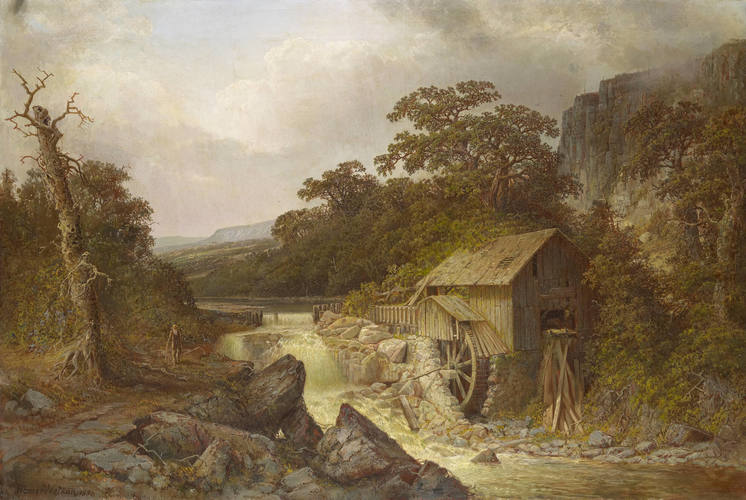
Homer Watson, The Pioneer Mill, 1880
Oil on canvas, 86 x 127.8 cm, Royal Collection Trust, Windsor Castle, Berkshire
The work was very much of its time and place. Late nineteenth-century Ontario was fascinated with its recent history, and especially with the hardiness and independence that were widely associated with pioneers. The province’s rampant industrialization during the decades around 1880 led to waves of regret about the decline of quaint water-wheel mills, symbols of a supposedly simpler but disappearing society. For Watson, all this was personal. The building in The Pioneer Mill recalls the sawmill that Watson’s paternal grandfather had built in Doon. Watson was well aware that the downfall of his grandfather’s mill (symbolized especially by the image’s dead tree) was due to faceless industrialization and individual human greed. In a lengthy unpublished essay he moralized on how his grandfather’s mill, by relentlessly devouring trees, created a wasteland that ultimately spelled the mill’s collapse. For Watson, The Pioneer Mill was as much a warning about human-engendered environmental degradation as it was a hymn to the pioneers of the Doon area.
This Spotlight is excerpted from Homer Watson: Life & Work by Brian Foss.
 Rococo Riff
Rococo Riff
 In Memory of Monet
In Memory of Monet
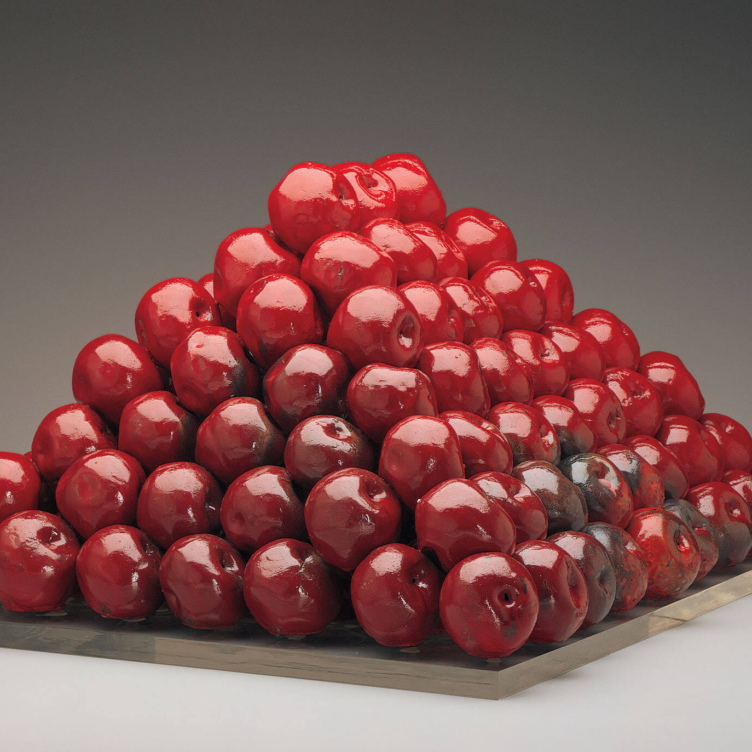 Pyramid Scheme
Pyramid Scheme
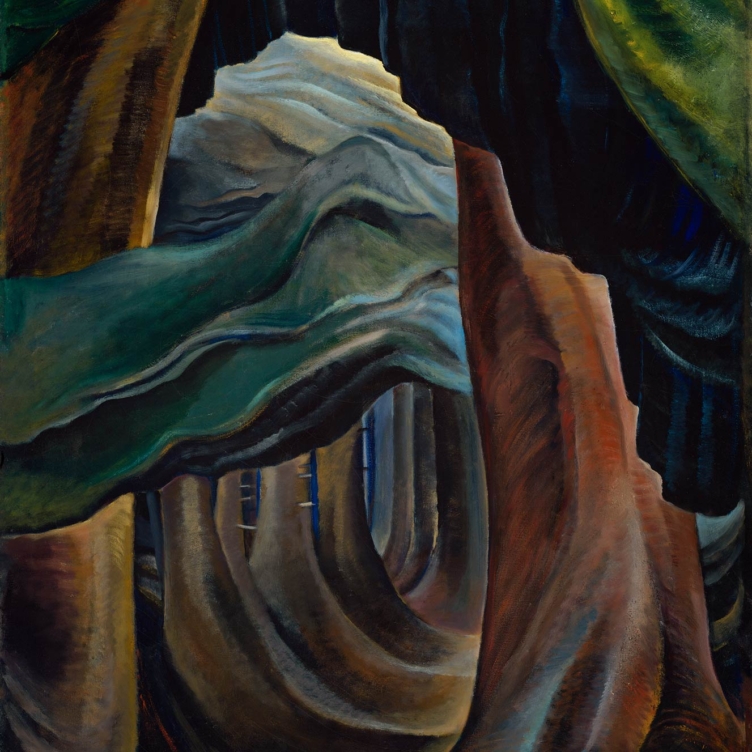 Transportive Trunks
Transportive Trunks
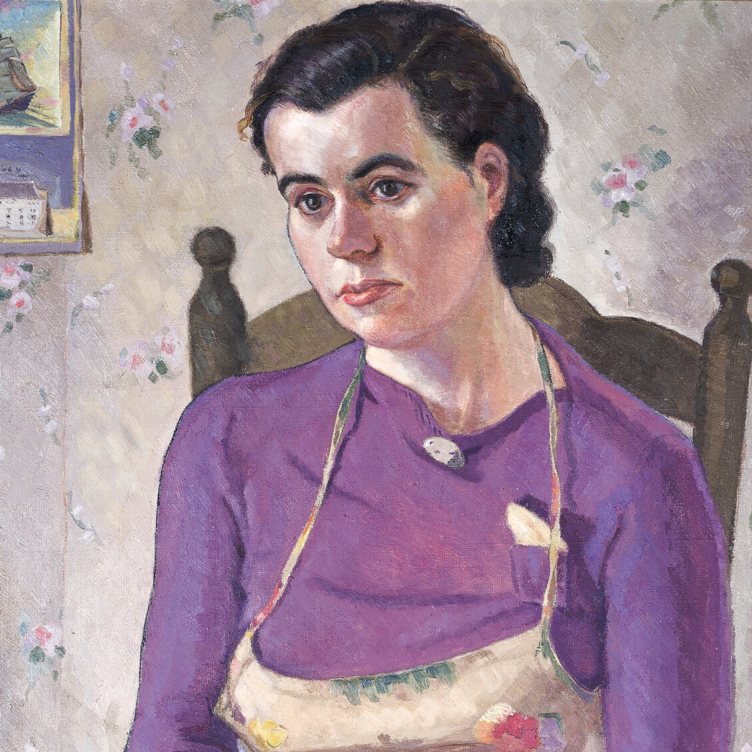 The Military Mate
The Military Mate
 Looking Up on the World
Looking Up on the World
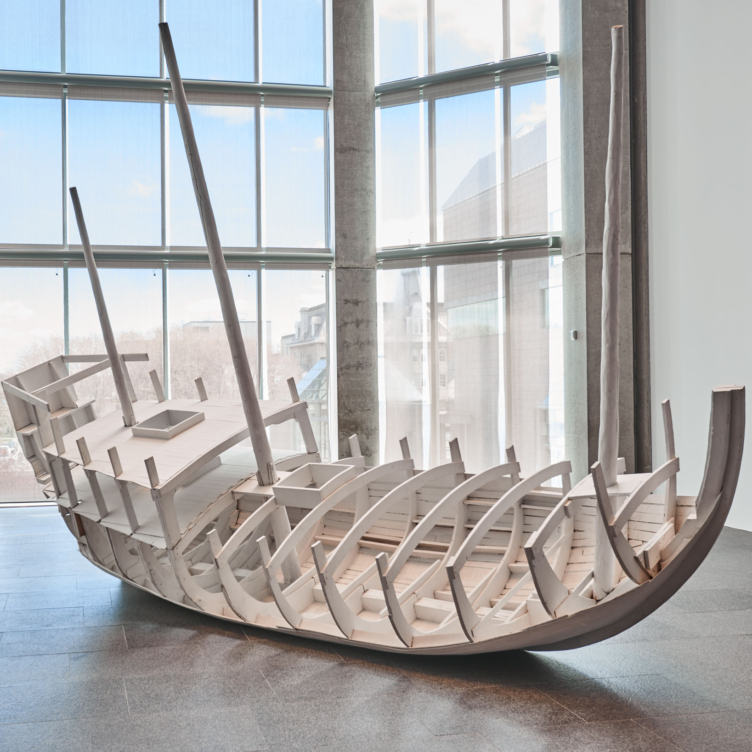 Vessel of Despair
Vessel of Despair
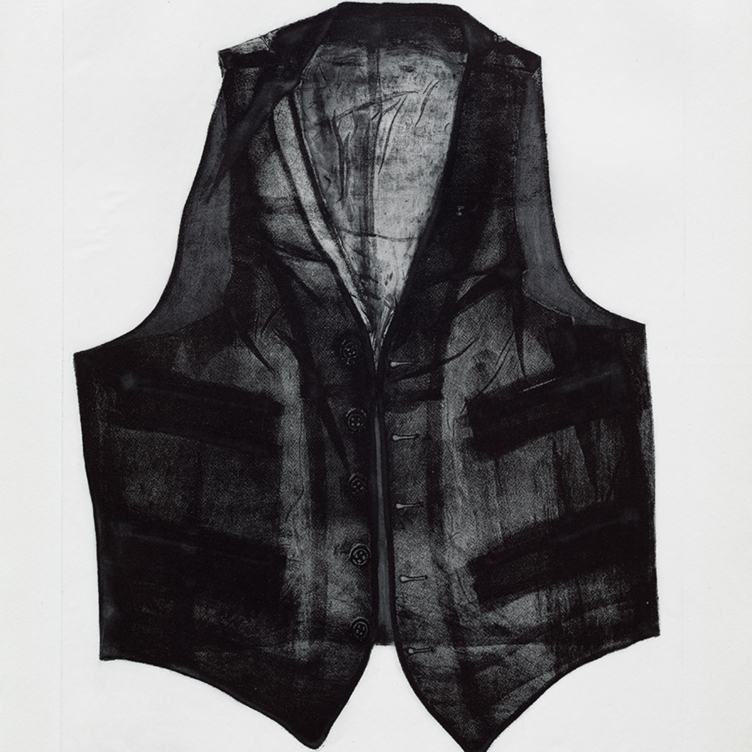 Layers of Meaning
Layers of Meaning
 In Parallel to Nature
In Parallel to Nature
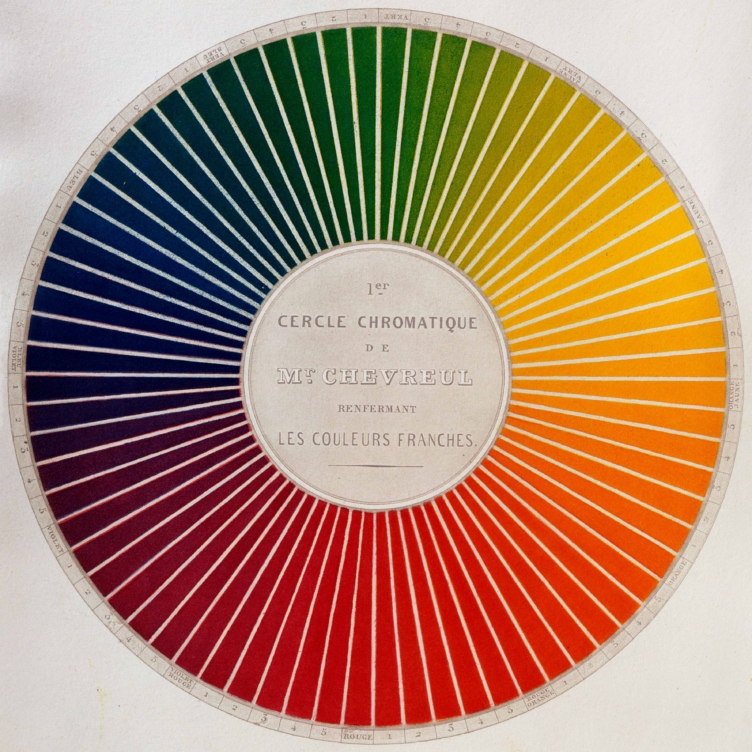 Wheel of Fortune
Wheel of Fortune
 Paintings after emotional states
Paintings after emotional states
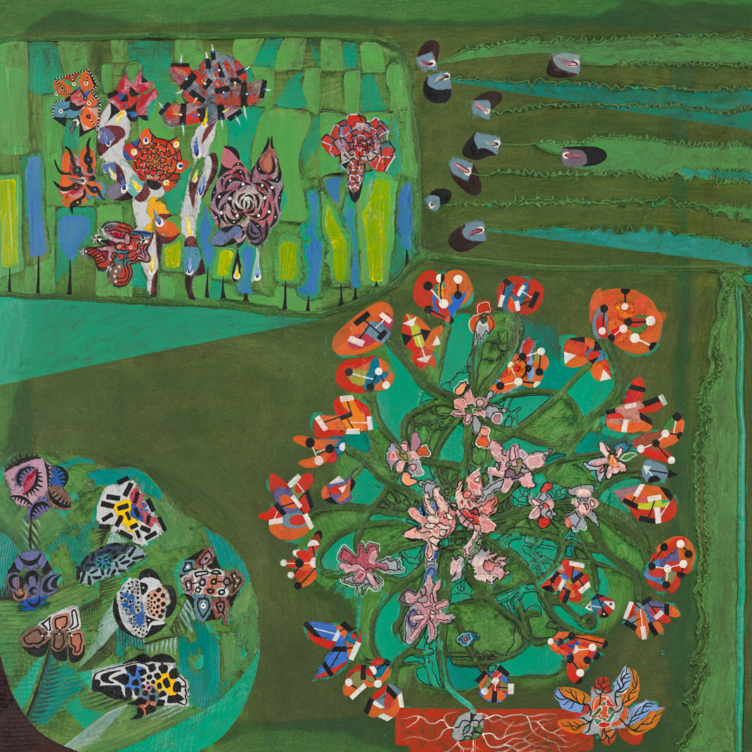 Garden of Delight
Garden of Delight
 Stitching the Archives
Stitching the Archives
 A Working-Class Hero
A Working-Class Hero
 Imagining Entangled Futures
Imagining Entangled Futures
 Bridging Far and Near
Bridging Far and Near
 Soft Power
Soft Power
 Imagining Emancipation
Imagining Emancipation
 A Priceless Portrait
A Priceless Portrait
 Meditation in Monochrome
Meditation in Monochrome